The 1970s were not kind to Rickenbacker guitars. Luckily for the company, bass demand exploded and 4000/4001 production kept the factory humming. How big of a change in emphasis are we talking? Well, using register entries, bass production went from about 20% of production in 1968 to 74% by 1973–with more 4001s registered that year than total instruments registered in 1968. So it was a pretty major shift.
Why? Well, music had changed and Rickenbacker guitars had not. Clean and chime-y was out of fashion, and that’s kinda what Rickenbackers do. Yes yes, you and I know you can get some nice dirt out of one, but you can’t get that Les Paul through a dimed Marshall kind of dirt that the market wanted. So Rickenbacker guitars were terminally uncool.
But despite the fact that basses were flying out the back door as fast as they could make them, Rickenbacker knew that you can’t live on basses alone. So they tried to change the conversation about what a Rickenbacker guitar was and could be. The 480 launched in 1972, using the “hot” 4001 body style to answer the question “what if Rickenbacker bass, but guitar?” They expanded upon that formula in 1974 with the 481, asking “what if Rickenbacker bass, but guitar with humbuckers?” And then in 1975 came the 430 to ask the question “what if Rickenbacker, but NOT Rickenbacker?”
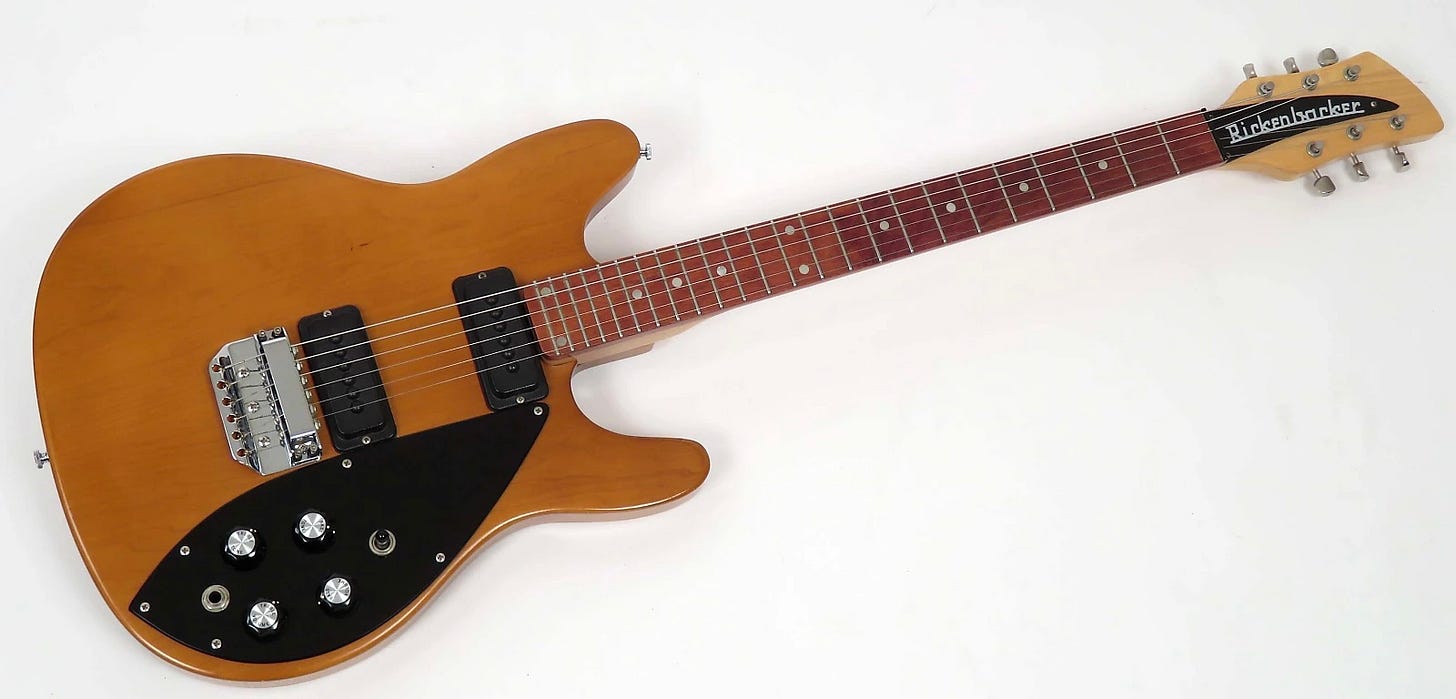
While the Forrest White-designed, Telecaster-inspired body was the first new guitar design that could not be traced back to Roger Rossmeisl, who had departed in 1962, it had actually been kicking around the factory for a while before it finally hit the market. Various 6 and 4 string iterations had hit the pricelist in 1971 (a different “430” with a deluxe 470 brother, and short scale 3000/3001 bass versions, click here to learn more) and 1973 (the modular 490, click here to learn more) without ever actually making it to the market. But finally in 1975, the time had come.
So what do we mean by “Rickenbacker, but not Rickenbacker”? Well, in the “not Rickenbacker” category we obviously have the two-piece slab maple, clearly Telecaster-inspired body, a bolt on one piece 24-fret neck with an extremely flat radius, and a budget friendly matte finish in Black, Mapleglo, White, Walnut, and Natural Mahogany.
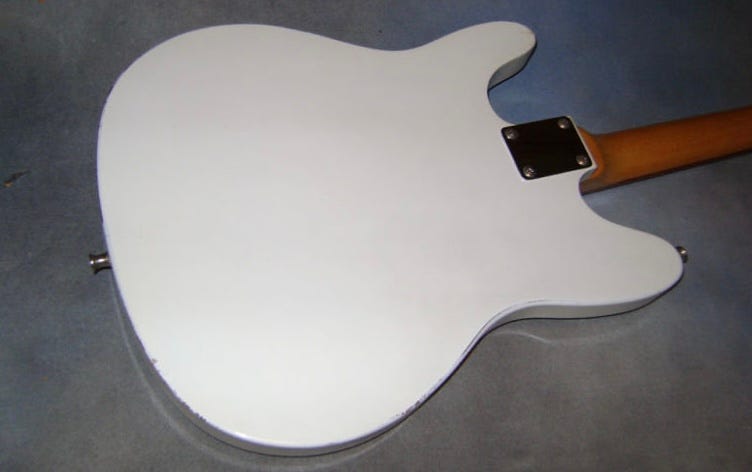
Natural Mahogany? Yup. While the vast majority of 430s produced had a maple body, mahogany was an option.
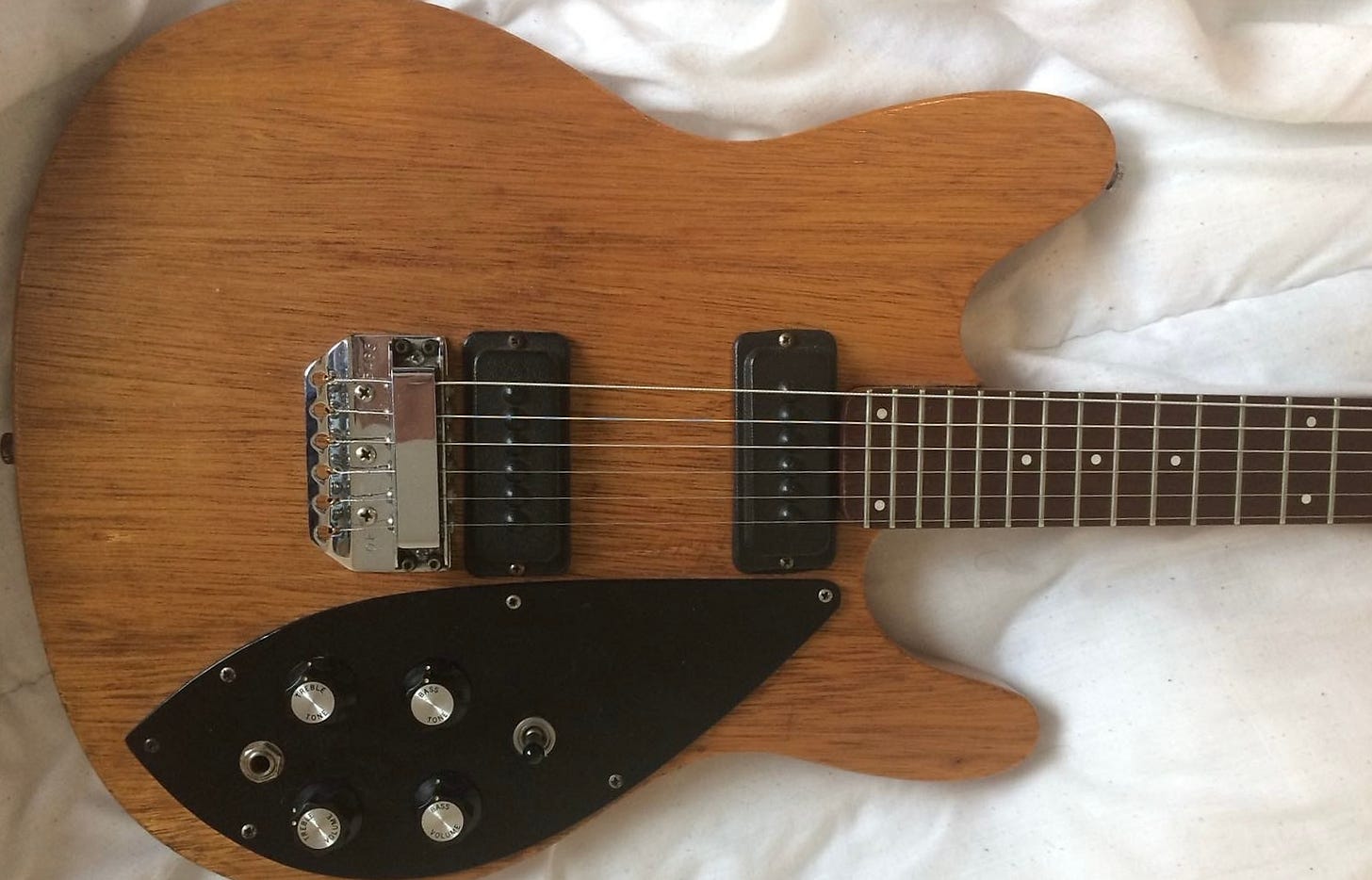
Pretty much everything else came straight out of the Rickenbacker parts bin: a 425/450 bridgeplate with a standard 6-saddle adjustable bridge, standard Higain pickups—albeit stuffed inside a black plastic one-piece case, bean button Kluson deluxe tuners, a one level black plastic teardrop pickguard, and a black backpainted plexiglass truss rod cover.
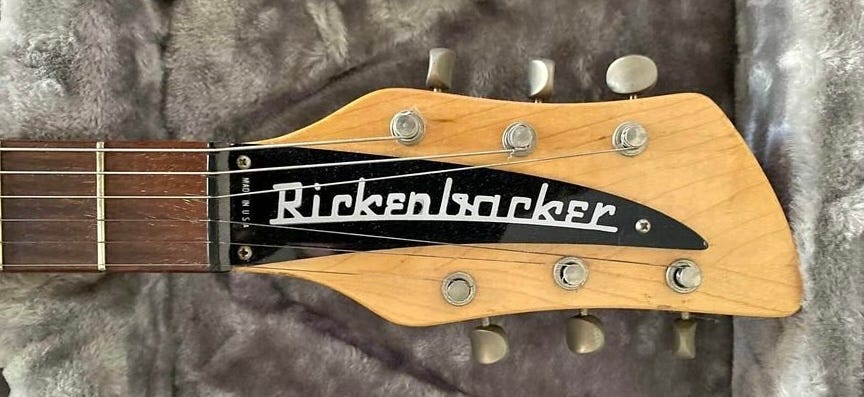
One kinda thoughtful design feature is the pickguard. Because the output jack is facemounted, two extra screws were added towards the bottom point of the teardrop to provide a little structural strength to a potential wear/point of failure area.
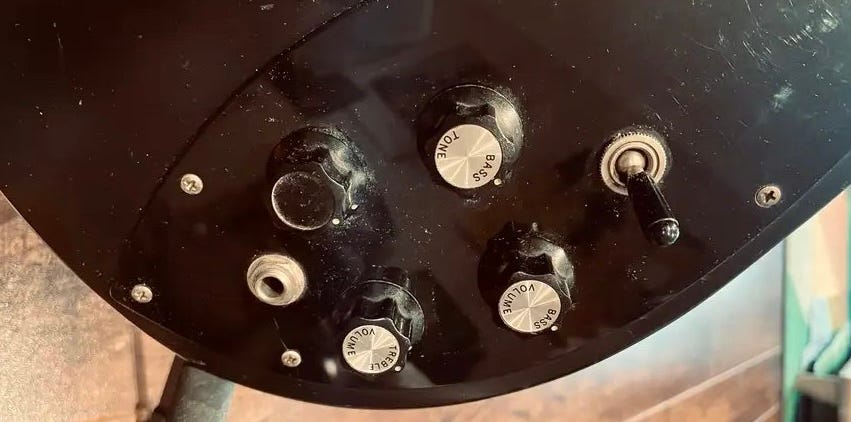
While production did not last long enough for any significant evolution of the 430–running only from May 1975 to February 1976–there were a couple minor changes from the very first production batch to all the following ones: the tuners changed from white plastic buttons to nickel, and the fret marker dot inlays got bigger. Like, almost comically large.
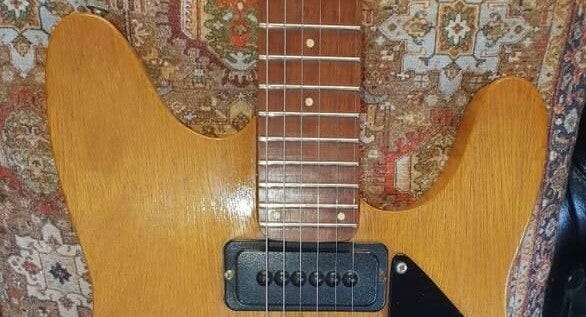
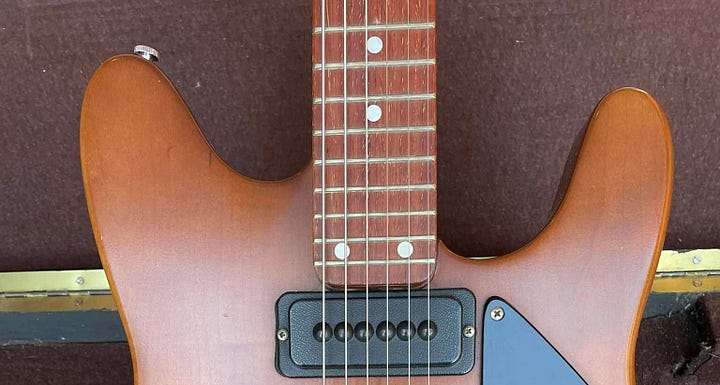
Turns out the market response to the question “what if Rickenbacker, but NOT Rickenbacker?” was “no”, making the 430 one of the shortest production run models in company history. Because they fell into the “cheap used guitar” bucket early, clean examples are quite rare today. But as we all know, rare does not necessarily mean valuable, and that is certainly true of this short lived and not terribly well known model.
.

